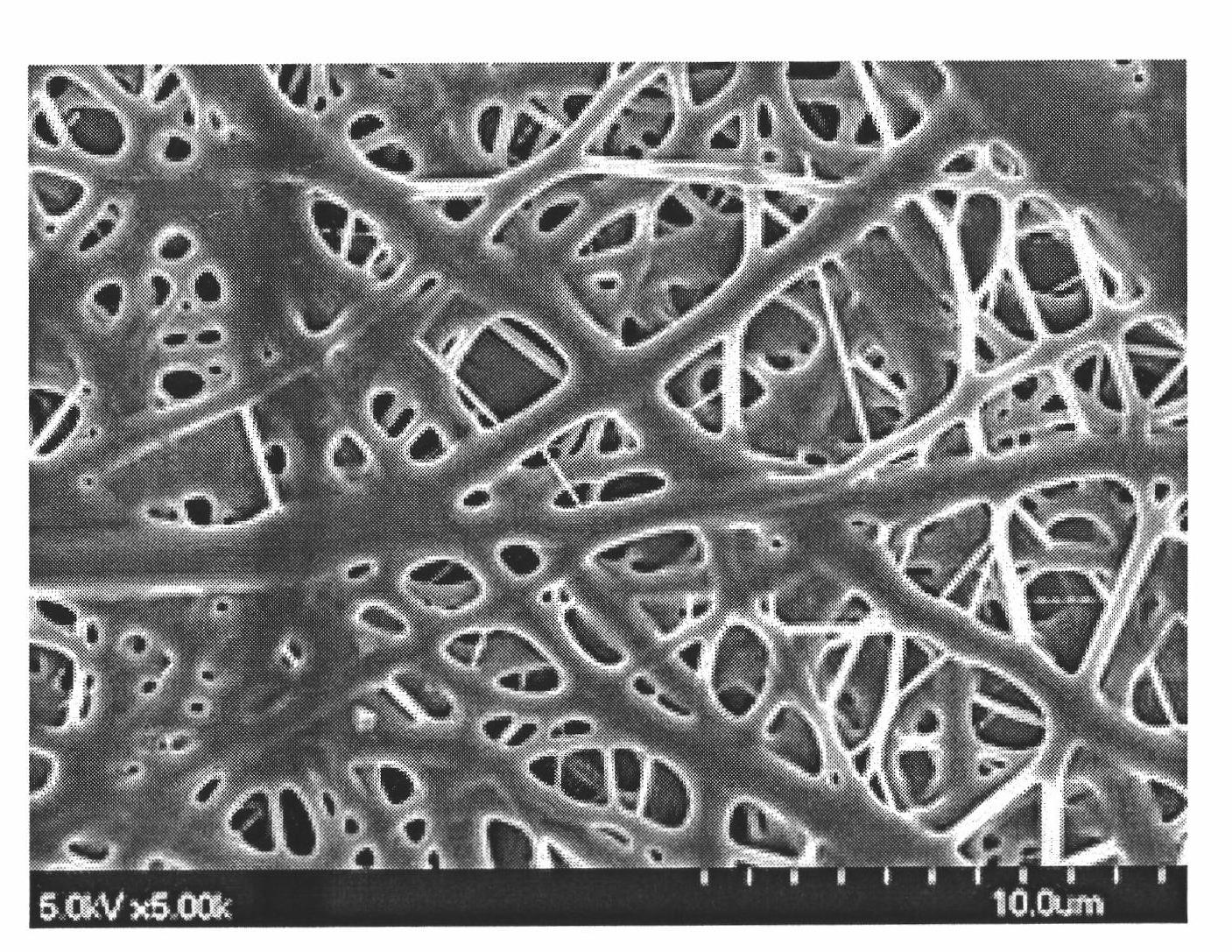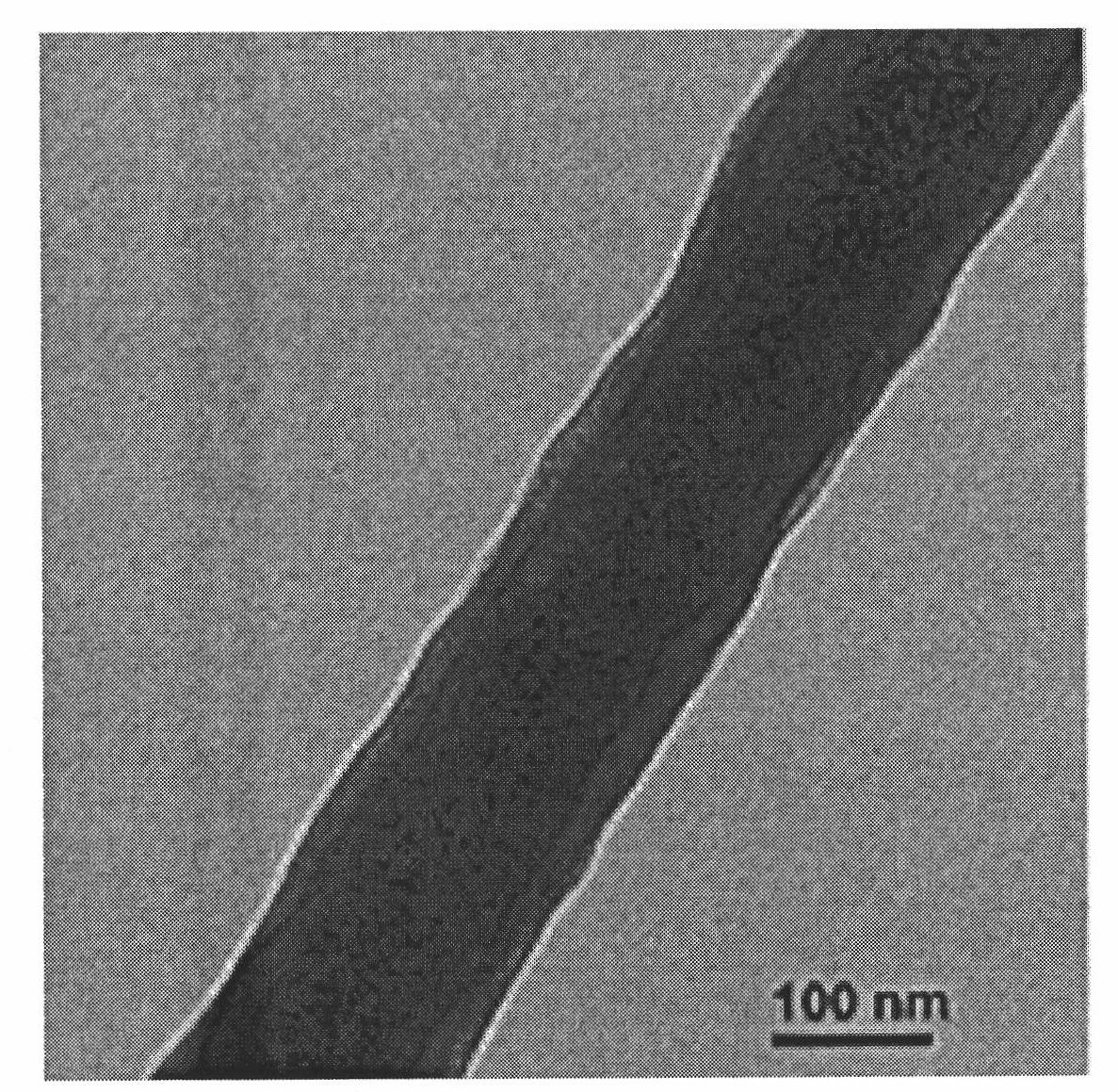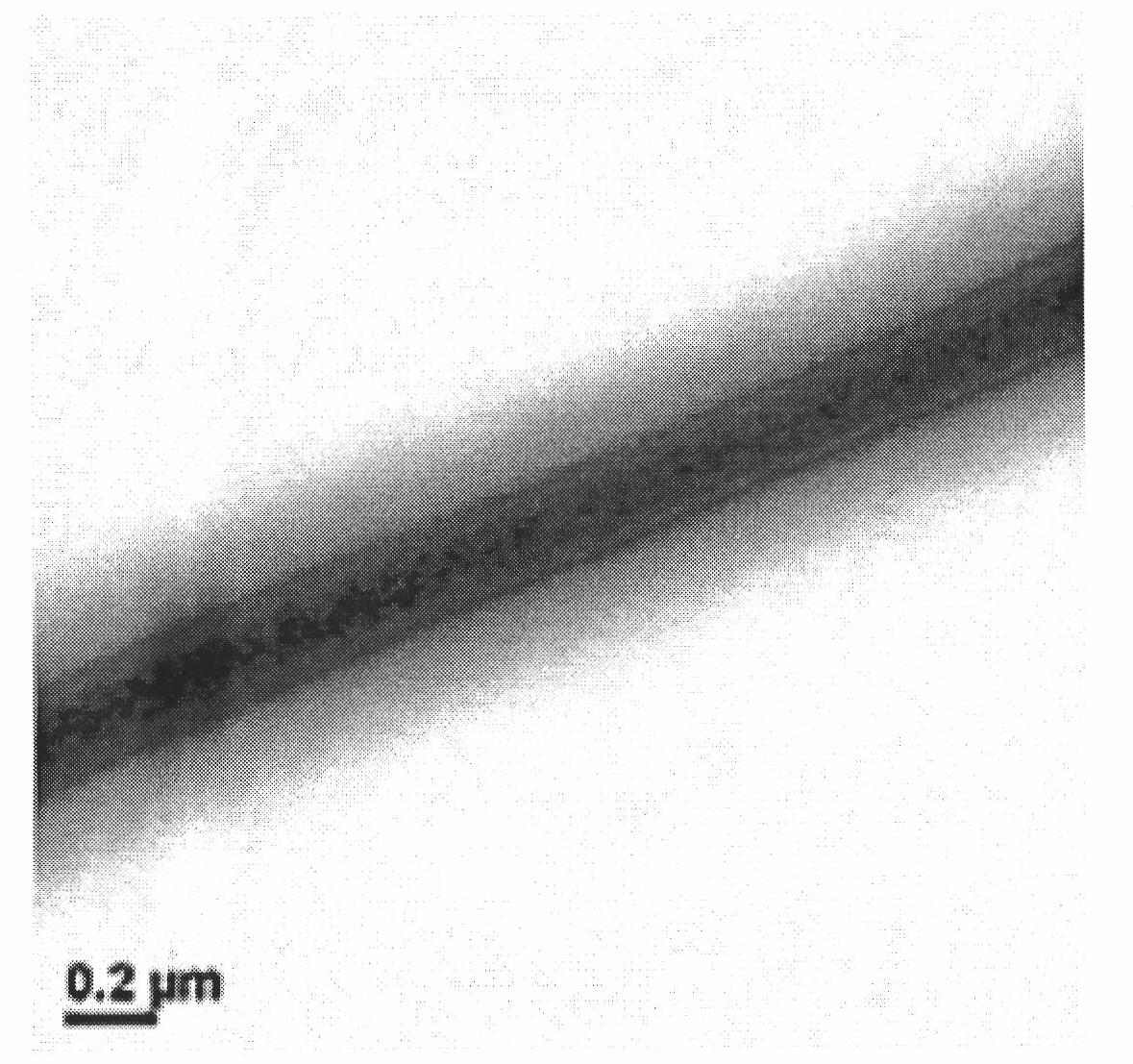Coaxial polyphosphazene nanofiber composite membrane and preparation method thereof
A nanofiber, polyphosphazene technology, applied in fiber processing, textiles and papermaking, non-woven fabrics, etc., can solve the limitations of polyphosphazene nanofiber membrane preparation and its practical application, poor mechanical strength of nanofiber membrane materials, It is difficult to obtain polyphosphazene nanofiber membrane and other problems to achieve the effect of improving stability and mechanical strength, easy availability of raw materials and uniform shape
- Summary
- Abstract
- Description
- Claims
- Application Information
AI Technical Summary
Problems solved by technology
Method used
Image
Examples
Embodiment 1
[0030] A coaxial electrospinning device was used to dissolve poly-p-methylphenoxyphosphazene with a molecular weight of 200,000 in In dimethylformamide, be made into the poly-p-methylphenoxyphosphazene solution that weight percentage concentration is 25%, as coaxial electrospinning outer layer spinning liquid; In dimethyl sulfoxide, a polyacrylonitrile solution with a concentration of 25% by weight is prepared as the spinning solution for the inner layer of coaxial electrospinning; the polyacrylonitrile solution is injected into the inner layer of the coaxial spinneret, Inject the poly-p-methylphenoxyphosphazene solution into the outer layer of the coaxial spinneret, adjust the flow rate of the outer layer spinning solution to be 1mL / h, the flow rate of the inner layer spinning solution to be 1mL / h, and the receiving distance to be 15cm. The wire voltage is 10kV, and electrospinning is carried out to obtain coaxial fibers with polyacrylonitrile as the core and polyphosphazene...
Embodiment 2
[0032] A coaxial electrospinning device was used to dissolve poly-p-methylphenoxyphosphazene with a molecular weight of 600,000 in In dimethylacetamide, it is made into poly-p-methylphenoxyphosphazene solution with a concentration of 20% by weight as the outer layer spinning solution of coaxial electrospinning; the polyacrylonitrile solution with a molecular weight of 80,000 At In dimethylformamide, be made into the polyacrylonitrile solution that weight percent concentration is 20%, as coaxial electrospinning inner layer spinning liquid; Inject polyacrylonitrile solution into the inner layer of coaxial spinneret, will The poly-p-methylphenoxyphosphazene solution is injected into the outer layer of the coaxial spinneret, and the flow rate of the outer layer spinning solution is adjusted to 0.8mL / h, the flow rate of the inner layer spinning solution is 0.8mL / h, and the receiving distance is 20cm , The spinning voltage is 15kV, and electrospinning is carried out to obtain coaxi...
Embodiment 3
[0034] Using a coaxial electrospinning device, dissolving poly-p-methylphenoxyphosphazene with a molecular weight of 1,000,000 in tetrahydrofuran to prepare a solution of poly-p-methylphenoxyphosphazene with a concentration of 15% by weight, as Coaxial electrospinning outer layer spinning solution; polyacrylonitrile with a molecular weight of 100,000 is dissolved in In dimethylacetamide, be made into the polyacrylonitrile solution that weight percent concentration is 15%, as coaxial electrospinning inner layer spinning liquid; Inject polyacrylonitrile solution into the inner layer of coaxial spinneret, will The poly-p-methylphenoxyphosphazene solution is injected into the outer layer of the coaxial spinneret, and the flow rate of the outer layer spinning solution is adjusted to 0.5mL / h, the flow rate of the inner layer spinning solution is 0.5mL / h, and the receiving distance is 25cm. The spinning voltage is 18kV, and electrospinning is performed to obtain coaxial fibers with ...
PUM
| Property | Measurement | Unit |
|---|---|---|
| diameter | aaaaa | aaaaa |
| diameter | aaaaa | aaaaa |
Abstract
Description
Claims
Application Information
 Login to View More
Login to View More - R&D
- Intellectual Property
- Life Sciences
- Materials
- Tech Scout
- Unparalleled Data Quality
- Higher Quality Content
- 60% Fewer Hallucinations
Browse by: Latest US Patents, China's latest patents, Technical Efficacy Thesaurus, Application Domain, Technology Topic, Popular Technical Reports.
© 2025 PatSnap. All rights reserved.Legal|Privacy policy|Modern Slavery Act Transparency Statement|Sitemap|About US| Contact US: help@patsnap.com



